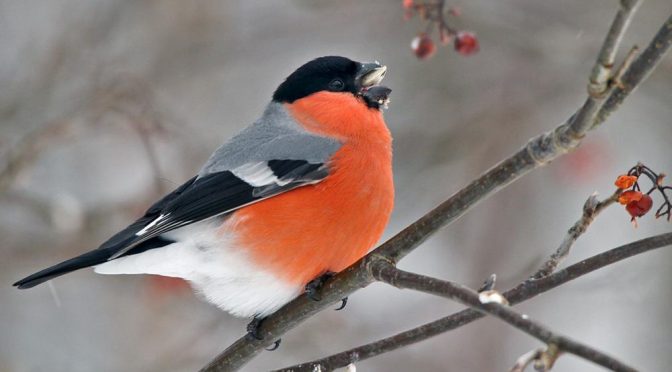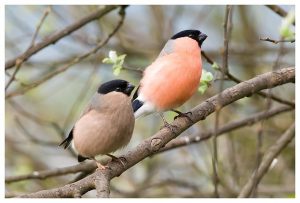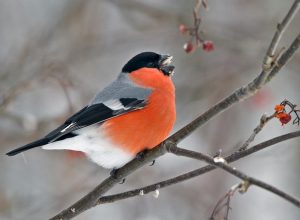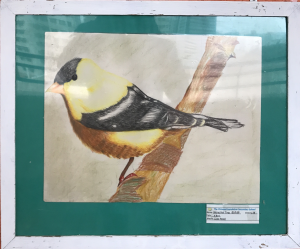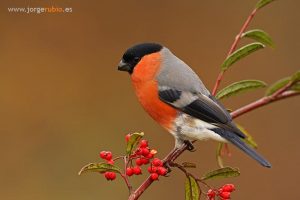| Common Name | (in English) Eurasian Bullfinch |
| (in Chinese) 紅腹灰雀 | |
| Scientific Name | (in Latin) Pyrrhula pyrrhula |
| Peculiar characteristics / external features: | The bullfinch is a bulky bull-headed bird. The upper parts are grey; the flight feathers and short thick bill are black; as are the cap and face in adults (they are greyish-brown in juveniles), and the white rump and wing bars are striking in flight. The adult male has red underparts, but females and young birds have grey-buff underparts. It moults between July and October, but males do not have the duller autumn plumage that is typical of some other finches.[11] The song of this unobtrusive bird contains fluted whistles, and is often described as ‘mournful’. |
| Distributions: | This bird breeds across Europe and temperate Asia. It is mainly resident, but many northern birds migrate further south in the winter. Mixed woodland with some conifers is favoured for breeding, including parkland and gardens. |
| Habits: | |
| Dietary | The food is mainly seeds and buds of fruit trees, which can make it a pest in orchards. Ash and hawthorn are favoured in autumn and early winter. If wild bird cover is planted for it, kale, quinoa and millet are preferred, next to tall hedges or woodland. This species does not form large flocks outside the breeding season, and is usually seen as a pair or family group. |
| Reproductive (Solitary/Social/Territorial, Courtship Behavior, Taking care of youngs, etc) | Bullfinches construct nests containing fine twigs with moss and lichen intertwined and a lining of black roots and shrubs. Nests are usually placed only a few feet above ground. There are sometimes up to three clutches of 4-5 eggs laid during the season, which spans early May to mid-July. Chicks hatch out in about two weeks and are fed a mixture of seeds and insects. The male Bullfinch helps the female incubate the eggs, andhe also feeds her while she sits on the nest. He later assists the female in collecting food for the young. |
| Whatever appropriate | |
| Interesting Fact: | Though small flocks may form at feeding sites in the winter, studies have shown that birds fly to the site individually or in pairs. They form strong, lasting pair bonds and it’s usual to see birds in pairs throughout the year.
Nests have a double construction, with the twiggy base supporting a cup of interwoven fine grass and dried rootlets. Most pairs will attempt to raise two broods a year; some manage three. Females usually show dominance over the males – is the cock bullfinch the original hen-pecked male? |
References:
- http://animaldiversity.org/accounts/Pyrrhula_pyrrhula/
- http://www.oiseaux-birds.com/card-eurasian-bullfinch.html
- https://ww2.rspb.org.uk/community/wildlife/f/13609/t/9147.aspx
Voice of Eurasian Bullfinch:
https://www.youtube.com/watch?v=-ZUKmMUT4lY
Video:
